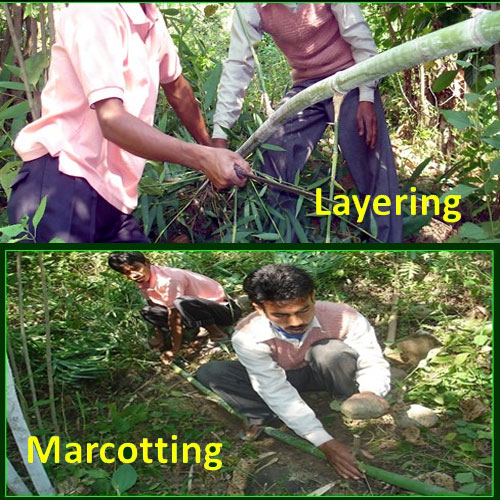Layering is a method of bringing a culm or branch for propagation while attached to the mother plant and in contact with a moist rooting medium (soil). The species like B. polymorpha, B. textilis, B.vulgaris, Guadua angustifolia, Dendrocalamus giganteus, and D. longispathus can be propagated using this technique.
Different layering techniques are ground layering or simple layering, stump layering, air layering or marcotting, and seedling layering. In the case of ground layering, the whole culm or a branch bearing part of the culm is bent down to the ground into a prepared shallow trench and pegged down and covered with the soil. If the culm is difficult to bend, a partial cut can be made at the base, and the size of the trench depends on the size of the culm.
Mulching with a coir mat or moist straw and regular watering are preferred and waterlogging should be avoided. Rooting and sprouting occur in the nodes and the nodes are separated if rhizome formation is observed which can be done using a sharp knife or a saw. In the stump layering method, the culm is cut leaving two to three basal nodes and the stump is covered with the rooting medium. 200 ppm IBA is found to enhance sprouting and rooting. Sprouting is observed 6 months after cuttings the culms.
Marcotting is a modified layering technique in which the swollen base of a branch complement on the mid culm zone is covered with propagating medium and held in place by a suitable receptacle.

